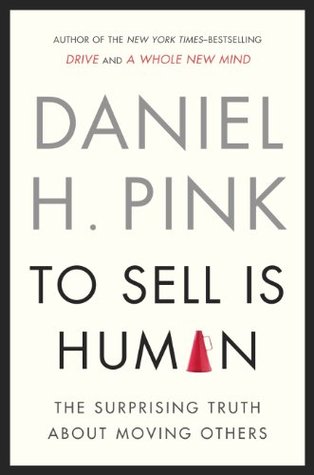More on this book
Community
Kindle Notes & Highlights
Read between
February 23 - March 11, 2019
One adage of the sales trade has long been ABC—“Always Be Closing.” The three chapters of Part Two introduce the new ABCs—Attunement, Buoyancy, and Clarity.
Health care and education both revolve around non-sales selling: the ability to influence, to persuade, and to change behavior while striking a balance between what others want and what you can provide them. And
Attunement is the ability to bring one’s actions and outlook into harmony with other people and with the context you’re in.
Once positive emotions outnumbered negative emotions by 3 to 1—that is, for every three instances of feeling gratitude, interest, or contentment, they experienced only one instance of anger, guilt, or embarrassment—people generally flourished.
Today, both sales and non-sales selling depend more on the creative, heuristic, problem-finding skills of artists than on the reductive, algorithmic, problem-solving skills of technicians.
First, in the past, the best salespeople were adept at accessing information. Today, they must be skilled at curating it—sorting through the massive troves of data and presenting to others the most relevant and clarifying pieces. Second, in the past, the best salespeople were skilled at answering questions (in part because they had information their prospects lacked). Today, they must be good at asking questions—uncovering
motivational interviewing.” This technique, which originated in therapy and counseling but has since spread to other realms, seeks to spark behavior change not by coercing people, promising them rewards, or threatening them with punishments, but by tapping their inner drives. And the most effective tools for excavating people’s buried drives are questions.
simplicity, unexpectedness, concreteness, credibility, emotions, and stories.
The purpose of a pitch isn’t necessarily to move others immediately to adopt your idea. The purpose is to offer something so compelling that it begins a conversation, brings the other person in as a participant, and eventually arrives at an outcome that appeals to both of you.
Once upon a time only some people were in sales. Every day, they sold stuff, we did stuff, and everyone was happy. One day everything changed: All of us ended up in sales—and sales changed from a world of caveat emptor to caveat venditor. Because of that, we had to learn the new ABCs—attunement, buoyancy, and clarity. Because of that, we had to learn some new skills—to pitch, to improvise, and to serve. Until finally we realized that selling isn’t some grim accommodation to a brutal marketplace culture. It’s part of who we are—and therefore something we can do better by being more human.
essential rules of improvisational theater: (1) Hear offers. (2) Say “Yes and.” (3) Make your partner look good.


